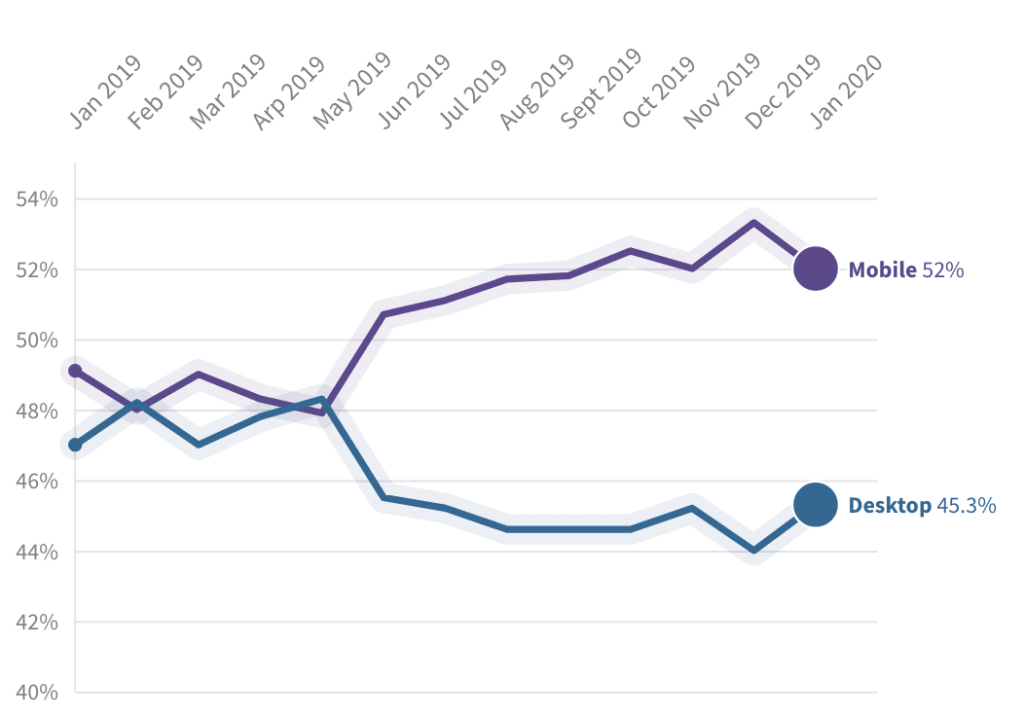It doesn’t make sense.
You spent months preparing for relaunching your ecommerce store.
You even paid boatloads of cash to various professionals to get your website right.
You had high expectations.
Except, you can’t seem to convert your web visitors into actual customers.
Does this scenario sound familiar?
Reasonable ecommerce conversion rates are essential to digital commerce optimization. Poor conversion rates affect your bottom line, and your business suffers in the long term.
Curious to learn more?
Let’s dive in.
What is a Conversion Rate?
To understand a conversion rate, you need to understand conversions.
Typically, a conversion is an action taken by a website visitor in response to your call to action (CTA).
Would you like your site visitors to subscribe to your email list? Buy a product?
When site visitors respond to these requests, these actions are considered a conversion.
In marketing, a conversion is an action taken by your website visitor in response to your call to action (CTA).
So how do you calculate a conversion rate?
You need to know:
- Number of people who see the CTA
- Number of people who take the desired action
Add a little math:
(Number of People who take the desired action ÷ Number of visitors who see CTA) ×100
Not too complicated, right?
Let’s explore what makes a good conversion rate.
Good Conversion Rates—Do they Exist?
Examples of ecommerce conversions include adding items to shopping carts, saving for later purchases, or completing a purchase.
So you’re probably wondering what’s a good ecommerce conversion rate.
Well, that depends.
Most ecommerce metrics vary widely by industry.
The good news?
Regardless of your current conversion rates, there’s always room for improvement.
So what are some of the reasons for low ecommerce conversion rates?
Let’s find out.
12 (REAL) Reasons For Low Conversion Rates
#1: Your Site Makes A Bad Impression
Visitors are unlikely to buy from you if they don’t like your site. The same thing happens when visitors don’t enjoy a physical store.
What’s worse is if visitors can’t find what they need.
If you have high traffic but low conversions, consider site design issues first.
Site design issues may include:
- Poor navigation. Ensure that the most popular items are easy to find.
- Poor filtering and sorting. Visitors to your site should have the ability to limit options using specific criteria. Too many options overwhelm visitors and affect your conversion rate.
- Poor search. Search results should match what people want. If your web visitors can’t find an item, they won’t be able to buy it.
So what’s the solution?
The Fix: Is your site design outdated? It’s time for a site re-design.
Consider changing your home page from time to time and changing left-hand navigation elements. These actions will keep visitors interested in your site.
#2: Site Isn’t Optimized
If your site has poor conversions, consider Search Engine Optimization. SEO helps visitors find your site on the search engine results pages (SERPs). This process when people search for keywords related to your products.
Poor optimization also causes ads to drive the wrong people to your site. If visitors don’t find what they expect when they get to your site, you’ll have low conversion rates.
High-quality visuals are essential for ecommerce stores. Poor visuals will cause low conversions.
Why? Customers won’t buy items that don’t look attractive or that they aren’t sure of.
So what’s the solution?
The Fix: Use relevant keywords on your website for SEO purposes. This will ensure you attract the right traffic.
Also, consider using tools that have visual configurators. This will encourage your site visitors to buy more.
#3: Ignoring Mobile Users
You can no longer ignore mobile users.
The majority of now people use their smartphones to research products online.
What’s more?
The internet is now taking a mobile-first approach. M-commerce is expected to experience a 29.84% CAGR by 2025 as global smartphone adoption and mobile payment usage continues to grow. Between January 2019 and January 2020, mobile share of total online traffic steadily surpassed desktop by 7.3%.

Search engine giant Google executed changes in their indexing process. Google will now index a site’s mobile content before the desktop version.
Sites that aren’t optimized for mobile result in a poor customer experience.
Pop-ups that aren’t easy to exit and “accept Cookies” notifications may cause immediate site abandonment.
So what’s the solution?
The Fix: Use responsive web design(RWD). Responsive Web design allows web pages to render well on a variety of devices and screen sizes. This makes it easy for your site visitors to use mobile devices.
#4: Poor Search Tools
Search has become a critical part of digital optimization that can make or break your conversion rates.
Your site visitors typically don’t have a high attention span. They need to find what they want—quickly. Irrelevant search results or zero search results repel your site’s visitors. That means lower conversion rates.
For example, your site’s lack of a chat function is likely to affect conversion rates.
Moreover, customers who struggle to find solutions or products they’re looking for can generate costly support tickets and calls.
So what’s the solution?
The Fix: Use AI-powered search tools such as always available chat with omnichannel support. Site search plays a vital role in providing your site visitors with the most relevant content and information for their experience.
#5: Poor Personalization Tactics
Personalization tactics may be too broad and focused on remarketing.
Remarketing is an essential part of any ecommerce conversion process. It’s a way to get the attention of people who come to your site and leave without completing a purchase. However, remarketing has to be personalized based on real-time engagement on a site.
So what’s the solution?
The Fix: AI-powered tools that allow you to create and deliver dynamic content.
These tools allow you to present tailored content, offers, and product recommendations to your visitors.
These recommendations consider factors such as demographic and geographic data, on-site behavior, and history with your brand.
#6: Underutilizing Social Proof and Testimonials
Ecommerce stores often fail to leverage the powerful impact of social proof and testimonials. These elements are essential in building trust and substantiating the quality of your offerings.
The Fix: Enhance your product pages and checkout process by integrating reviews, testimonials, and user ratings effectively. These should be visible and easily accessible to reassure website visitors and reduce cart abandonment, thereby improving your website conversion rate.
#7: Inefficient A/B Testing on Key Website Elements
Regular A/B testing is a cornerstone of conversion rate optimization (CRO), yet many online businesses overlook its importance. Testing variations of your homepage, landing pages, CTAs, and pricing can uncover valuable insights.
The Fix: Conduct thorough A/B tests to determine the most effective configurations that compel users to take the desired action. This could involve experimenting with different messaging, popups, or the layout of sale items, all aimed at optimizing the user experience and increasing the average conversion rate.
#8: Lack of Personalized User Experiences
Generic interactions do not suffice in today’s digital marketing landscape. Personalization is key to engaging potential customers effectively.
The Fix: Implement dynamic content and targeted product recommendations that adapt based on user behavior and past interactions. Use data analytics and insights from tools like Google Analytics to refine your targeting strategies and ensure that your marketing messages resonate with the intended audience, thus enhancing your ecommerce conversion rates.
#9: Neglecting Mobile Optimization
With the growing prevalence of mobile devices, optimizing for mobile users is non-negotiable. A poor mobile experience can drastically increase your bounce rate and lower conversion rates.
The Fix: Ensure that your ecommerce site is fully responsive, with a mobile-friendly checkout process and navigation. Consider implementing features like exit-intent popups specifically designed for mobile, and optimize load times to keep mobile users engaged.
#10: Ineffective SEO and PPC Campaigns
SEO and PPC are critical components of a successful online business, but ineffective execution can lead to attracting visitors who are unlikely to convert. The
Fix: Sharpen your SEO strategies to align with what potential customers are searching for. Refine PPC campaigns to target keywords that match the user’s purchase intent. Continuously monitor and adjust based on performance metrics to ensure optimal spend and targeting, which will lead to better ecommerce conversion rates.
#11: Poor First Impressions
The first impression of your ecommerce site can determine whether a new visitor stays or leaves. Poor design, slow loading times, and complicated navigation can all contribute to a negative first impression.
The Fix: Focus on usability and functionality in your website design. Ensure your homepage and landing pages load quickly, display essential information and guide visitors smoothly toward making a purchase. Consider the value proposition of your website and how it is communicated visually and textually.
#12: Not Utilizing Advanced CRO Tools
Many ecommerce sites do not fully utilize the advanced tools available for conversion rate optimization. Tools that can track user behavior, analyze traffic, and automate personalized interactions are vital.
The Fix: Leverage SaaS solutions that offer sophisticated CRO tools, such as personalized email marketing, lead generation popups, and behavior-triggered messaging systems. These tools can help you understand the nuances of your target audience’s behavior and tailor the online experience to boost conversions.
Reach for Success
Every investment you make should have decent returns.
Spending time and money on your website while having low eCommerce conversion rates can be confusing.
It’s frustrating. The truth is you can do something about it.
Partner with Zoovu for robust AI solutions.
You won’t regret it.

